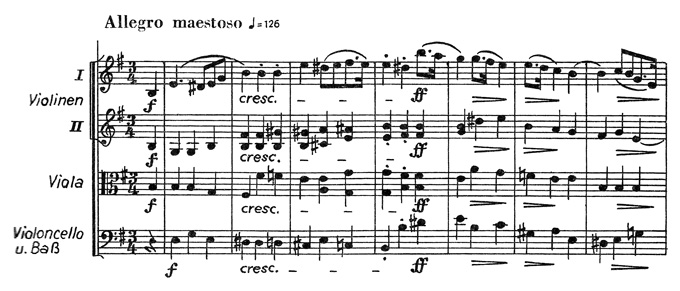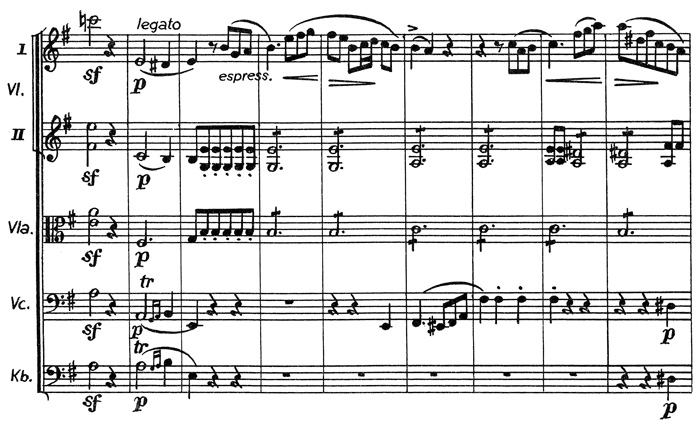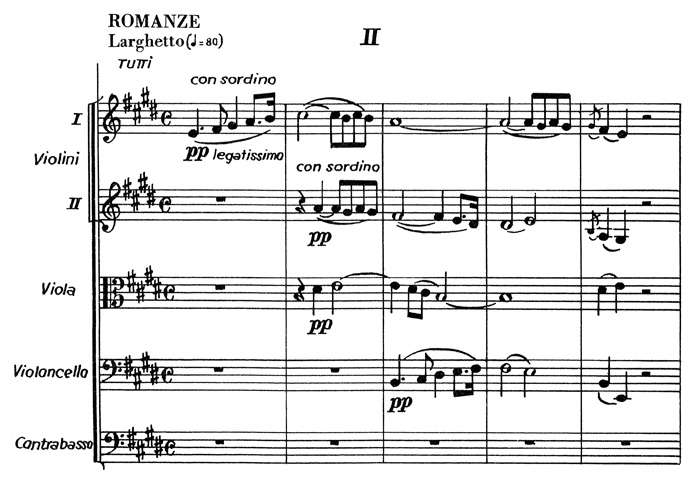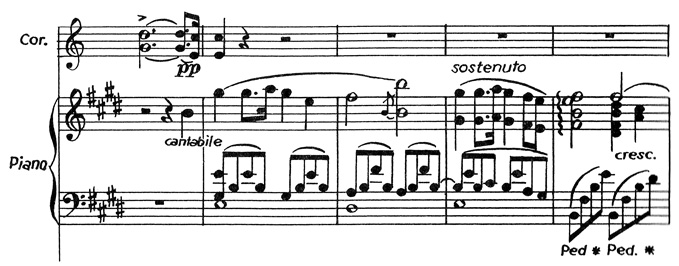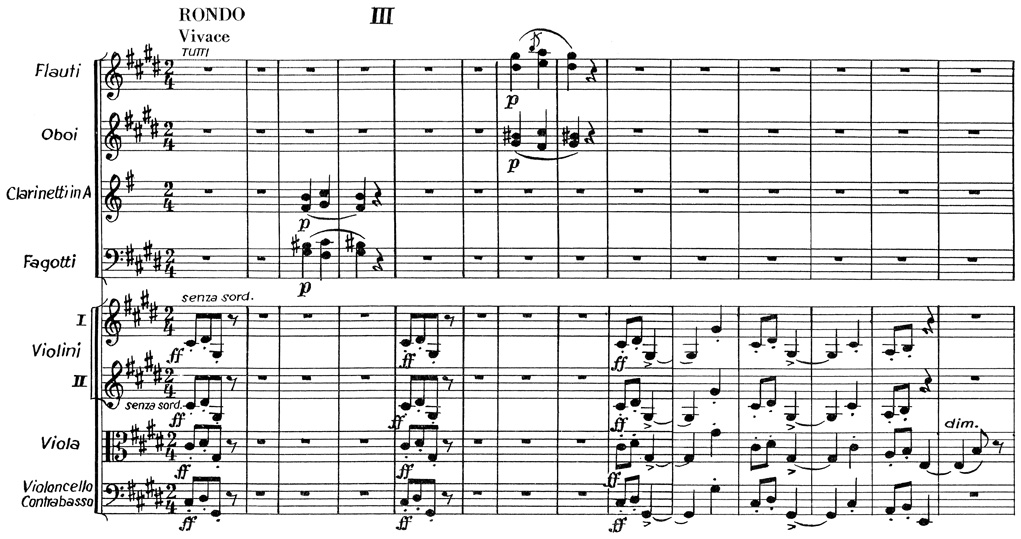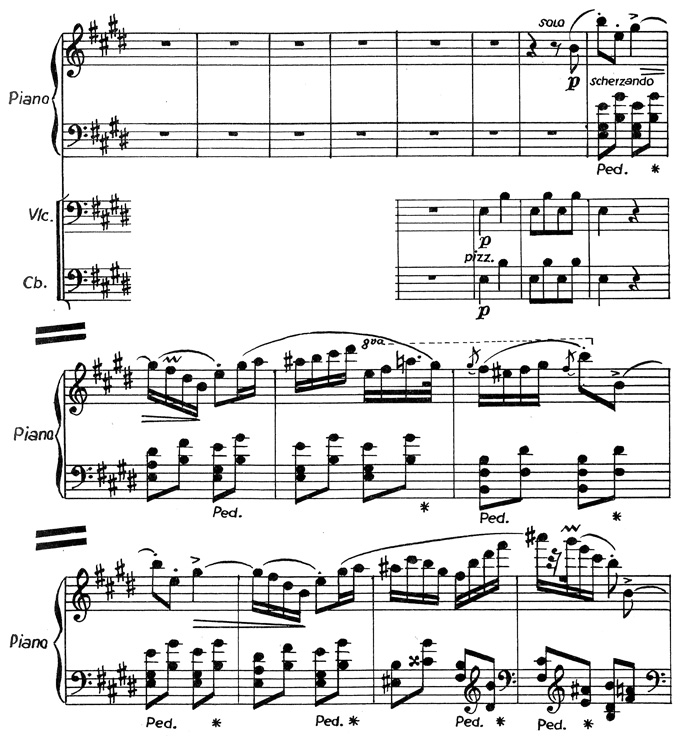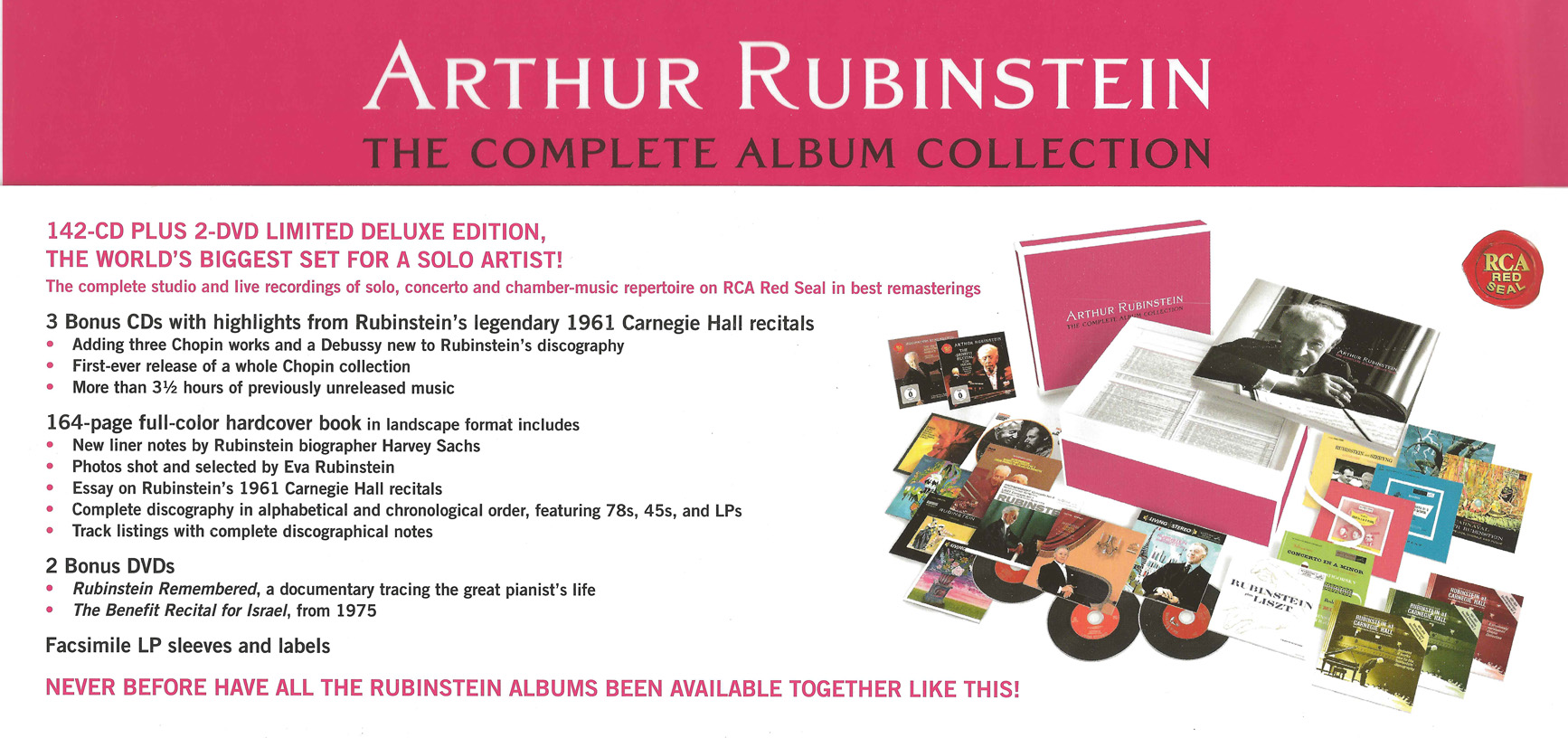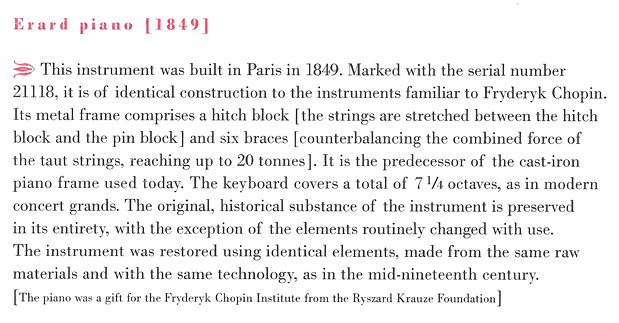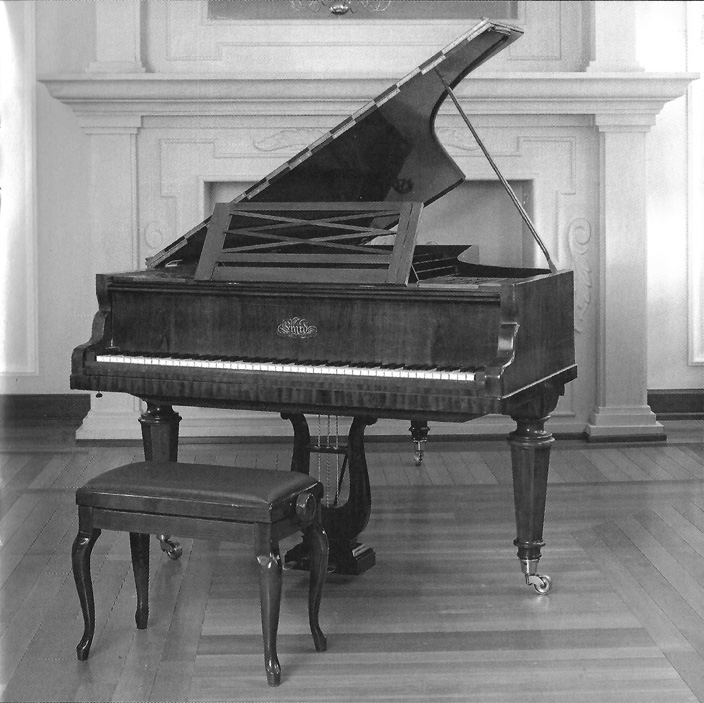Frédéric Chopin
Piano Concerto No.1 in E minor, op.11
Media Review / Comparison
2014-10-11 — Original posting (on Blogger)
2014-10-12 — Addendum on the 1849 Erard grand piano played by Yulianna Avdeeva
2014-11-13 — Re-posting as is (WordPress)
2016-07-28 — Brushed up for better readability
Table of Contents
- Introduction
- About the Composition
- Rating & Tempo Comparison
- The Interpretations, Detail
- Martha Argerich / Claudio Abbado (1967)
- Stefan Askenase / Willem van Otterloo (1960)
- Yulianna Avdeeva / Antoni Wit (2010)
- Yulianna Avdeeva / Frans Brüggen (2012)
- Arthur Rubinstein / Sir John Barbirolli (1937)
- Arthur Rubinstein / Alfred Wallenstein (1953)
- Arthur Rubinstein / Stanisław Skrowaczewski (1961)
- Addendum 1: The Erard Piano in Yulianna Avdeeva’s 2012 Recording
- Addendum 2
Introduction
This post was originally triggered by Yulianna Avdeeva‘s new recording below; meanwhile, I have received Arthur Rubinstein’s Complete Album Collection, which includes three additional recordings by Arthur Rubinstein. All these are now included as well. Here are the recordings that I’m going to discuss in the case of the Chopin Piano Concerto No.1 in E minor, op.11 (sorted by the pianist’s last name):
- 1967: Martha Argerich, Claudio Abbado, London Symphony Orchestra
- 1960: Stefan Askenase, Willem van Otterloo, Orkest van den Haag
- 2010: Yulianna Avdeeva, Antoni Wit, Warsaw Philharmonic Orchestra
- 2012: Yulianna Avdeeva, Frans Brüggen, Orchestra of the 18th Century
- 1937: Arthur Rubinstein, Sir John Barbirolli, London Symphony Orchestra
- 1953: Arthur Rubinstein, Alfred Wallenstein, Los Angeles Philharmonic Orchestra
- 1961: Arthur Rubinstein, Stanisław Skrowaczewski, New Symphony Orchestra of London
About the Composition
Frédéric Chopin (1810 – 1849) wrote his Piano Concerto No.1 in E minor, op.11 in 1830, actually after what is now known as his Piano Concerto No.2 in F minor, op.21. The numbering now follows the order of publication. The E minor concerto is the more popular of the two, more brilliant, also more expressive, maybe. Or is it just that the melodies resonate more with the listener? Some additional, general remarks on the Chopin piano concertos are given in my earlier posting, “Chopin: Piano Concerto in F minor, op.21“.
The Movements
The Chopin concerto op.11 features three movements:
- Allegro maestoso
- Romance: Larghetto
- Rondo: Vivace
Some short notes on these movements:
I. Allegro maestoso
The first one is an Allegro maestoso (3/4, 1/4 = 126), starting with a first theme:
The movement is in the form of a sonata movement with three themes, all presented in the orchestral introduction. The second theme starts as follows:
and the third theme begins with
I refrain from further comments, as this music is so well-known. But let me make one exception: the score that I have (Edition Eulenburg, No.1215) was revised and commented by Stefan Askenase. For this movement it features a metronome number (M.M.) of 1/4 = 126, which appears hardly doable and is obviously far away from the tempo that Stefan Askenase himself is using (see below). Arthur Rubinstein comes close in his earliest recording. In her 1968 recording even Martha Argerich only plays 1/4 = 120, with major excursions to slower tempi. I’m not sure what the source of the M.M. mark in the score is. The one for the slow movement is even more questionable!
II. Romance: Larghetto
The second movement is a Romance: Larghetto (4/4, 1/4 = 80), starting withThe actual theme is presented by the piano, a few bars later:Throughout the movement, the violins are playing con sordino. The remark about the M.M. number in the score for the first movement applies here as well, even more so. 1/4 = 80 is truly impossible to hold through: there is a hemidemisemiquaver run towards the end! In his fastest interpretation from 1953, Arthur Rubinstein starts at 1/4 = 62. All other artists appear to agree that around 1/4 = 50 is the “right” tempo for this movement. Though for me, this does indeed feel slow at the beginning!
III. Rondo: Vivace
The last movement is a Rondo: Vivace (2/4), starting with the orchestra setting the scene:
This is followed by the actual Rondo theme, played by the piano (sorry for the butchered score!):As in his op.21, Chopin uses Polish folk music elements in the last movement. While in op.21 that movement features a Mazurka, the above solo is actually a Krakowiak (Cracovienne), a fast, syncopated Polish dance. In the score, Chopin does not specify a metronome value for this movement. Maybe that’s an indication that the other two values are not original?
Rating & Tempo Comparison
I have put together a table, giving my (personal, relative) ratings (1 .. 5) and the metronome readings (approximate) for each movement & interpretation (blue indicating slower, green indicating faster performances):The color coding for the metronome readings is relative to the average among the interpretations, not relative to the composer’s (?) numbers in the score. For details see my comments below.
The Interpretations, Detail
Martha Argerich / Claudio Abbado (1967)
Chopin: Piano Concerto No.1 in E minor, op.11; Liszt: Piano Concerto No.1
Martha Argerich, Claudio Abbado, London Symphony Orchestra
DG 449 719-2 (CD, stereo); ℗ 1968
booklet 12 pp., e/d/f/i

This recording was made in 1967, 3 years after Martha Argerich‘s triumph at the International Chopin competition in Warsaw (1965). This is among her very first recordings with orchestral accompaniment. She is accompanied by Claudio Abbado (1933 – 2014) conducting the London Symphony Orchestra.
Notes on the Movements
I. Allegro maestoso
Duration: 18’59”; 1/4 = 120 (Allegro maestoso)
Excellent orchestra: very differentiated, good phrasing and articulation, agogics, the wind instruments are excellent. One characteristic of this recording is in the sometimes extreme rubato, with very (too? exaggerated?) strong ritardandi / tempo switches, such as for the second and third themes: the second theme is played at around 1/4 = 94, then the tempo picks up again up to 1/4 = 114, and for the third theme, the tempo is even below 1/4 = 80. Martha Argerich follows this pattern: she is stupendous in her agility and virtuosity, her playing enthralling. But her playing also features the same, extreme rubato / tempo changes, to a degree that makes it sometimes tricky to return from very fast passages to a “normal” tempo.
I don’t necessarily mean this as criticism, but I do find that not all tempo changes are as harmonic and “natural” as I would expect. However, there are also nice lyrical passages, such as the dialogs with the horn and with the bassoon. The strong tempo changes are likely a compromise, trying to allow for lyricism in the second and third themes, while at the same time being able to exhibit virtuosity: overall, the main impression that one probably keeps from this is one of a pianist seeking (and mastering, of course) utter virtuosity in many of the fast & difficult passages.
II. Romance: Larghetto
Duration: 9’58”; 1/4 = 50 (Romance: Larghetto)
A good performance, pianistically perfect, flawless, virtuosic, clear. Yet, I wonder if this still fulfills the title “Romance”? I sense that at the age of 26, Martha Argerich was probably not “in the mood” to express intimate / sentimental feelings in music? Sometimes, the music sounds a bit too extroverted, maybe also pianistically almost too perfect? Maybe she was trying to give a perfect rendition of the score, letting the music speak for itself? The final smorzando in the orchestra is close to exaggerated, possibly extended a bit too much.
III. Rondo: Vivace
Duration: 8’58”; 1/4 = 124 (Rondo: Vivace)
Clearly the fastest and most virtuosic interpretation of this movement, the orchestra sound is excellent (probably the best in this comparison). Unfortunately, the interpretation entirely misses the spirit & the dance character of this music: Martha Argerich seems focused on virtuosity only. Her playing often sounds rushed, focused on speed. On top of that, there are some odd tempo changes, plus an inexplicable, dramatic tempo jump at bar 128 — why?
| Overall Duration: | 38’10” |
| Recommendation: | Yes, but only for the first two movements! |
| Rating: | 3.7 (4 / 4 / 3) |
Stefan Askenase / Willem van Otterloo (1960)
“A Tribute to Chopin” (various works)
Stefan Askenase, Willem van Otterloo, Orkest van den Haag
Stardust Records (iTunes download, 256 Kbps, stereo); ℗ 2007
(no booklet)
Currently not available on CD

In this mono recording from 1960, Stefan Askenase (1896 – 1985) plays with the Orkest van den Haag (the Orchestra of the Hague, the Netherlands), conducted by Willem van Otterloo (1907 – 1978). I suspect (judging from this recording) that at 64, Askenase, had already passed the top of his career: similar to his later recording of the F minor concerto (from 1963, see the posting “Chopin: Piano Concerto in F minor, op.21“), this performance can’t compete with even modest, current performances by any means, both from the soloist, as well as from the orchestral part.
Notes on the Movements
I. Allegro maestoso
Duration: 20’48”; 1/4 = 108 (Allegro maestoso)
The orchestral introduction is very heavy, broad, the vibrato in the violins too strong. And there are extreme tempo variations / rubato, e.g.: the second theme (bars 24ff) starts extremely slow, as also the third theme at bars 61ff, the performance does not appear to advance at all, the musical flow is often almost nonexistent, with all the hesitations / rubato. Despite the occasional (strong) accelerando, the performance appears static.
The pianist fits into this picture, or did the conductor adjust to the soloist? The first part of the solo performance is more or less OK, though sometimes a bit superficial in the articulation. Towards the end of the movement it becomes apparent that Askenase is only able to deliver a superficial, approximate interpretation of this demanding solo part. The mono recording has obvious limitations in the sound and the transparency. Though the engineers apparently tried capturing key aspects, such as the horn and the bassoon solo parts. Still, I don’t get the feeling of an intense interaction between that and the soloist at the piano.
II. Romance: Larghetto
Duration: 9’53”; 1/4 = 50 (Romance: Larghetto)
In this recording, the worst part of the interpretation is in the obnoxious vibrato, particularly in the violins. In the solo part, the small note values / ornaments are performed too regularly, and it takes a lot of fantasy to read appassionato or con fuoco into the soloist’s performance, some accents are barely recognizable. The performance overall lacks tension, is often rather static.
III. Rondo: Vivace
Duration: 10’08”; 1/4 = 108 (Rondo: Vivace)
The slowest tempo in this comparison, relatively heavy both in the orchestra as well as in the solo; one gets the impression that Askenase was playing at his limits: this can barely be called vivace, and the piano part (especially in fast passages in the left hand) is sometimes lacking clarity
| Overall Duration: | 40’47” |
| Recommendation: | No, this might even scare people away from listening to this beautiful music. |
| Rating: | 1.0 (1 / 1 / 1) |
Yulianna Avdeeva / Antoni Wit (2010)
Chopin: Piano Concerto 1, various solo works for piano
Yulianna Avdeeva, Antoni Wit, Warsaw Philharmonic Orchestra
NIFC NIFCCD 600-601 (2 CDs, stereo); ℗ / © 2010
booklet 18 pp., Polish/English

Yulianna Avdeeva and the Chopin Competition 2010:
For Yulianna Avdeeva, her participation in the 2010 International Chopin Competition in Warsaw, and the fact that she won that competition against several very strong contenders (and as the first woman after Martha Argerich, back in 1965) marked the breakthrough for her pianistic career. This recording of the E minor concerto was made during the prize winner’s concert, on 2010-10-21, with the Warsaw Philharmonic Orchestra, conducted by Antoni Wit. In several ways, this is a very special recording, in that perspires the tension during that long and tough competition. On the other hand, especially towards the end it also reflects the feelings of relief, success, and triumph that must have moved the artist during that performance (and if one followed that concert online, one really could almost touch those emotions).
In that sense, it was a very unique performance that can’t be repeated, and the recording is a precious document about this event. On the other hand, that uniqueness made it possible for the artist to tackle this concerto again, only three years later, with an entirely different approach — see the recording below: the two recordings can very well live side by side! I have written a rather emotional report about Yulianna Avdeeva’s prize winner concert in my post “On Yulianna Avdeeva’s Success in Warsaw 2010“. I’m trying to make a “more neutral” judgement here. Still, as I now find, I have no reason to revise any of the statements in my report from 2011.
Notes on the Movements
I. Allegro maestoso
Duration: 20’55”; 1/4 = 110 (Allegro maestoso)
Compared to all versions with Rubinstein or Askenase, as well as Argerich/Abbado, the beginning sounds remarkably soft, mellow. The staccato dots in bar #2 are taken as détaché, maybe a bit on the soft side, but it certainly avoids the martial aspect in many other interpretations; the tempo is at the lower limit for an Allegro, but it still retains the maestoso aspect. It’s a live recording, so the microphone placement and the acoustics can’t compete with a studio setting: there is a fair amount of reverberation, and the violins don’t always sound quite homogeneous (one can hear vibrato and portamento of the violinists at the first desk). But for this special recording, capturing the atmosphere is far more important than perfect sound.
The Solo Part
As for the solo part: without wanting to repeat my enthusiastic statements from 2011, I must say that this performance still stands out from all others, even more so now, as I was able to compare Yulianna Avdeeva’s performance with 5 recordings by three other pianists (in 2011, I was merely comparing her with Argerich’s recording above).
This interpretation stands out in several ways: it never tries to excel with sheer virtuosity, it rather exposes all rhythmic, dynamic and articulation details in the composition with utmost clarity and detail; Moreover, Yulianna is a true master in bringing expression and emotionality into the tiniest of figurations (without neglecting the big phrases), using detailed agogics and a subtle rubato, and the way she interacts in duets with the horn and bassoon is very touching. There is nothing casual in this performance. I must say: this performance touches me as much as it did four years ago!
II. Romance: Larghetto
Duration: 9’31”; 1/4 = 55 (Romance: Larghetto)
And again: every single bar is telling a story in this solo part. It’s so expressive, yet intimate, harmonic, and the piano sound is singing — wonderful! Sometimes one gets the impression that Yulianna Avdeeva is controlling / using independent agogics for the two hands; masterful: the sempre leggierissimo triplets in the right hand close to the end of the movement, really played very lightly, as background to the longing (burning?) chords in the left hand, which can be seen as melody fragments (with other pianists, these chords are often mere accompaniment, often barely audible).
III. Rondo: Vivace
Duration: 9’42”; 1/4 = 120 (Rondo: Vivace)
Ah, I love that interpretation! It still breathes that special atmosphere at the 2010 prize winner’s concert, and for the soloist, one can feel that sense of giant relief from the pressure during the competition, as well as that feeling, the joy of success! Yulianna Avdeeva is putting clarity before virtuosity, and once more she is able to put tension into every single bar. As outlined in my enthusiastic statements from 2011: if I’m asked for a good example on what rubato means—here’s the best example I can think of!
Sure, Yulianna’s emotional playing was unheard of up to the time of the last Chopin competition, and even though the orchestra must have played that concerto well over a dozen times over the course of the preceding two weeks, they occasionally have troubles coordinating with the soloist here. Nevertheless: considering the live recording, the special circumstances and the stress of the preceding months, this is a truly excellent, remarkable recording!
| Overall Duration: | 40’21” |
| Recommendation: | YES, YES, YES — what else can I say? |
| Rating: | 5.0 (5 / 5 / 5) |
Yulianna Avdeeva / Frans Brüggen (2012)
Chopin: Piano Concertos Nos.1 & 2
Yulianna Avdeeva, Frans Brüggen, Orchestra of the 18th Century
NIFC NIFCCD 029 (CD, stereo); ℗ / © 2013
booklet 25 pp., English/Polish

In her second recording, from 2012, Yulianna Avdeeva (*1985) plays with the Orchestra of the 18th Century, under the baton of the late Frans Brüggen (1934 – 2014). For details and general remarks on this recording see the posting “Chopin: Piano Concerto in F minor, op.21” on the F minor concerto, which is also included on this CD. The HIP (historically informed playing) approach in this recording is not only through the orchestra and its conductor, but also in the fact that Yulianna Avdeeva is playing a historic Erard grand piano (serial No. 21118) from 1849 (see the addendum below for some more details). One should keep in mind, though, that the E minor concerto was completed almost 20 years before that Erard was built!
Notes on the Movements
I. Allegro maestoso
Duration: 20’36”; 1/4 = 114 (Allegro maestoso)
The main thing that strikes me now with this recording is not the piano, but the orchestra: the tempo is among the slowest, but the articulation is lighter, the sound much more transparent, vibrato is almost entirely absent (something I quickly get used to and then really like!). At first, this may sound a bit frugal, but I’d like to encourage hesitant listeners to open their ears and heart, and to enjoy the amount of detail that this recording offers!
Accompaniment
Frans Brüggen‘s orchestra plays with sharper contours, clearly outlining accents, sforzati, dynamic annotations in general, etc., and the orchestra never builds the dense “sound carpet” that can be heard in other recordings. One will also notice a number of differences in the text — I’m sure Brüggen and Avdeeva have done their thorough research, and so these differences are not doubt well founded. Watch out for altered slur, a few extra punctuations, and — most strikingly — bars 331, 333, and 335, where the four semiquaver doublets are turned into punctuated quavers. Most importantly, though: the orchestral accompaniment / part is totally in line with the solo part.
Switching from Yamaha to Erard
First and foremost: Yulianna Avdeeva has successfully transferred her excellent interpretation from 2010 onto this historic instrument! Sure, one can not expect the full-bodied, warm sound of the Yamaha CFX that she was playing in 2010. Sure, she was able to make that concert grand sing like few others. But here, on this historic Erard piano from 1849, there’s singing just as well, though with different qualities!
The Erard in this Concerto
The tone does not last quite as long as on a modern instrument, but it is so rich in harmonics, is singing in itself. One may at first have the impression of bad tuning, but the strings around 1850 (the instrument was carefully restored using authentic materials) were not made with the same material and precision as modern piano strings, the winding — where used — was different, and the construction and the coating of the hammers must be quite different from modern piano mechanics. The result is a singing tone that somehow reminds of the Walter fortepiano models from around 1800. Though the volume of the Erard is certainly much, much bigger.
Apart from the quality of the individual tones, the instrument features far more transparency (a lighter bass register), and a completely altered internal balance: bass and middle voices are much easier to follow that on a modern grand, where they are in danger of mixing with / hiding in the cello and double bass sound.
Yulianna Avdeeva uses very moderate arpeggiando playing, almost inconspicuous, and totally adequate. And then, there are these ethereal, lyrical passages that are impossible to produce on a modern concert grand — maybe the most striking part of the sound of this instrument! there is one little detail which I like more in Yulianna’s 2010 performance: in the duet with the bassoon, the period wind instrument is hard to hear behind the Erard (in the 2010 performance the bassoon may have been amplified electronically) — the beauty of this dialog is more apparent in the older recording.
II. Romance: Larghetto
Duration: 9’50”; 1/4 = 50 (Romance: Larghetto)
In the orchestra, Brüggen’s light articulation (and details such as the two last notes at the end of the first line — as shown above — being played staccato, makes the tempo appear faster than it really is. As for the solo part: the Erard brings a different quality of singing to this music: less concentrated on the top voice (where the instrument doesn’t sound as long as modern concert grand), but more to the piano part as a whole, which is again more transparent, giving more equal weight to both hands, and this balance is achieved much easier than on a modern instrument.
Some listeners may find the sound of the modern piano more “romantic” in this movement. But one should keep in mind that Chopin could not possibly picture the sound of a modern grand piano! Yes, there are details where a modern instrument is “better” (the legato, the wider dynamics which allowed Yulianna Avdeeva to “whisper” those triplets in the last part in her earlier recording). To me, this is compensated by being able to hear a recording that shows what Chopin had in mind with this music.
III. Rondo: Vivace
Duration: 9’56”; 1/4 = 120 (Rondo: Vivace)
And again, Yulianna Avdeeva was able to transfer all qualities from her 2010 interpretation on the Yamaha CFX onto the historic Erard piano. As expected, she profits from the extra clarity of that instrument, especially in this movement with all the rapid passages. As a studio recording, this one even beats her 2010 interpretation in terms of coordination with the orchestra. The lighter orchestra sound with its extra clarity in dynamics and articulation is an excellent match for this instrument.
| Overall Duration: | 40’21” (A remarkable coincidence — or not? — that Yulianna Avdeeva’s two recordings have the same overall duration, down to the second! OK, the 2010 recording included some 14″ of applause. |
| Recommendation: | YES, YES, YES — AGAIN! Even though some may miss the warm & full sound of a modern concert grand (especially perhaps in the slow movement), this recording has enough extra benefits on its own to make it at least as valuable as Yulianna Avdeeva’s earlier recording. As outlined in the introduction, I think that these two recordings can very well live side by side! Besides: this is a worthy legacy of the late Frans Brüggen! |
| Rating: | 5.0 (5 / 5 / 5) |
Arthur Rubinstein / Sir John Barbirolli (1937)
Arthur Rubinstein — The Complete Album Collection
CDs #6-10: Rubinstein — The Early Recordings 1931 – 1939
Arthur Rubinstein, Sir John Barbirolli, London Symphony Orchestra
SONY Classical 88691936912 (142 CDs / 2 DVDs, mono / stereo); ℗ / © 2011
Documentation 162 pp., track listing on CD sleeve

Arthur Rubinstein (1887 – 1982) made his first recording of the E minor concerto in 1937, six years after the recording of Chopin’s F minor concerto. Here, he is accompanied by Sir John Barbirolli (1899 – 1970)conducting the London Symphony Orchestra, in an early mono recording with obvious, inherent limitations:
Notes on the Movements
I. Allegro maestoso
Duration: 15’36” (97 bars skipped); 1/4 = 124 (Allegro maestoso)
This may be attributed to Zeitgeist: the orchestral introduction in this interpretation sounds martial, almost military, with extreme staccato / sforzato (where notes are merely marked with staccato dots). However, the listener does not need to suffer from this too much, as most of the orchestral introduction (bars 25 – 121, covering the introductions of the second and third themes) is cut out. That’s most likely due to time restrictions with early recording media.
Rubinstein delivers a lively, vivid interpretation, with clear articulation at least in the initial parts. It’s maybe a bit short of lyrical, intimate moments (e.g., those with the bassoon accompaniment). The tempo is fast (almost as fast as Chopin suggested!) — sometimes very fast, and then — especially in the very virtuosic later parts — the soloist’s articulation tends to be somewhat superficial (I don’t think this can be attributed to the pre-war recording technique). At least, Rubinstein tried approaching the composer’s metronome number!
II. Romance: Larghetto
Duration: 9’27”; 1/4 = 57 (Romance: Larghetto)
The orchestral introduction is too slow. Rubinstein then enters with a distinctly faster tempo. I quite like Rubinstein’s interpretation here: clear, expressive, even dramatic where required; the recording still offers limited pleasure, though, as the orchestra sounds rather dull, unclear (maybe the recording team didn’t know how best to capture muted violins?), and it doesn’t really mix well with the piano.
III. Rondo: Vivace
Duration: 8’14” (40 + 32 bars skipped); 1/4 = 120 (Rondo: Vivace)
As in the first movement, the orchestra is too forceful. Oddly, bars 48 – 87, as well as bars 306 – 337 are skipped in this recording (duration limitations of early media?). Rubinstein’s solo part is sparkling, but often rushed, the acciaccaturas frequently superficial, and the entire movement is dominated by extreme rubato, also in the orchestra, where also the Zeitgeist is showing up, in heavy portamenti.
| Overall Duration: | 33’17” |
| Recommendation: | A historic document at best, not really competitive — sounds like a reminiscence of Rubinstein’s early years, where (according to his own words) he was sometimes dropping half the notes… |
| Rating: | 2.0 (2 / 2 / 2) |
Arthur Rubinstein / Alfred Wallenstein (1953)
Arthur Rubinstein — The Complete Album Collection
CD #48: Chopin: Piano Concerto No.1 in E minor, op.11
Arthur Rubinstein, Alfred Wallenstein, Los Angeles Philharmonic Orchestra
SONY Classical 88691936912 (142 CDs / 2 DVDs, mono / stereo); ℗ / © 2011
Documentation 162 pp., LP liner notes on back of CD sleeve

In his second recording of the E minor concerto, from 1953 (still mono, of course), Arthur Rubinstein (1887 – 1982) is accompanied by Alfred Wallenstein (1898 – 1983) conducting the Los Angeles Philharmonic Orchestra.
Notes on the Movements
I. Allegro maestoso
Duration: 18’52”; 1/4 = 118 (Allegro maestoso)
The orchestra is a little less “military” than in Rubinstein’s first recording (above), but still very robust, the tempo is more moderate. the recording is obviously still mono, but the sound is much better now. Rubinstein’s playing is virtuosic, clear, “objective”. The artist wants to show what’s in the score, rather than his personal ideas about the music, taking into account the environment in which Chopin wrote his concertos (i.e., not adopting ideas that Beethoven and others added to the genre, but restraining the scope to models such as Moscheles and other virtuosi of the time). The result is that the interpretation features less lyrical, expressive aspects than other interpretations.
II. Romance: Larghetto
Duration: 9’45”; 1/4 = 62 (Romance: Larghetto)
This is definitely better than Rubinstein’s earlier recording of the same movement (see above): it is clearly the fastest interpretation (though still far from the 1/4 = 80 marked in the score), but one does not get the feeling of “too fast”, not even in the fast passages in this movement. The recording also highlights the nice, lyrical dialogs with the bassoon. To me, the best of Rubinstein’s recordings of the Larghetto.
III. Rondo: Vivace
Duration: 9’41”; 1/4 = 118 (Rondo: Vivace)
First and foremost: this is much better than Rubinstein’s earlier recording: enthralling, with momentum. There are some “losses” / superficialities, still, and some strange tempo changes / rubato, but the essential thing is that Rubinstein captures the spirit (and the folk dance character) of this movement very well. The orchestra features some pretty terrible portamenti and other romanticisms. But I let my rating be dominated by the positive aspects of the solo part.
| Overall Duration: | 38’17” |
| Recommendation: | To me, this is clearly Rubinstein’s best recording, despite it being mono only; maybe not entirely competitive against a good recent recording, but still a valuable document. |
| Rating: | 3.7 (3 / 4 / 4) |
Arthur Rubinstein / Stanisław Skrowaczewski (1961)
Arthur Rubinstein — The Complete Album Collection
CD #76: Chopin: Piano Concerto No.1 in E minor, op.11
Arthur Rubinstein, Stanisław Skrowaczewski, New Symphony Orchestra of London
SONY Classical 88691936912 (142 CDs / 2 DVDs, mono / stereo); ℗ / © 2011
Documentation 162 pp., LP liner notes on back of CD sleeve

With the advent of stereo, RCA Victor decided to re-record many of the works that had previously been released as mono recordings. One such example is Arthur Rubinstein‘s third recording of the Chopin E minor concerto op.11, made in 1961, now with the accompaniment of the New Symphony Orchestra of London, conducted by Stanisław Skrowaczewski (1923 – 2017).
Notes on the Movements
I. Allegro maestoso
Duration: 19’42”; 1/4 = 114 (Allegro maestoso)
Eight years later, the technique has made substantial progress: the recording is stereo, but oddly, the sound as such isn’t really better than the recording from 1953. Also, the orchestra appears rather mediocre, uninspired. Rubinstein probably felt the additional years. The interpretation is slower again, but the piano part equally good, though definitely much more careful, more lyrical, unpretentious, less focused on virtuosity; in fact, the virtuosic aspect, the brilliance (certainly a part of this concerto!) is now missing somewhat in this interpretation.
II. Romance: Larghetto
Duration: 10’44”; 1/4 = 52 (Romance: Larghetto)
Eight years after the recording above, Rubinstein returns to the “conventional” tempo. Did he convince himself that this was ultimately the “right” tempo, or did he adjust to a slight decrease in the agility of his fingers? In any case, in my opinion / perception, this is a somewhat less inspired interpretation than the one from 1953.
III. Rondo: Vivace
Duration: 10’04”; 1/4 = 112 (Rondo: Vivace)
8 years later, apart from this being a stereo recording, Rubinstein appears to have aimed at correcting superficialities and rushed passages in his earlier recording. The agility in his fingers is still amazing, but one can also see some limitations, in that he appears to start losing clarity in the articulation. The tempo is slower, Rubinstein’s playing more careful, overall. But the result is a performance that sounds too tamed to me, losing some of the folk dance character. The orchestra sometimes also appears a bit marginal in terms of clarity & articulation.
| Overall Duration: | 40’30” |
| Recommendation: | Despite the better sound, I still prefer Rubinstein’s 1953 recording over this one. |
| Rating: | 3.0 (3 / 3 / 3) |
Addendum 1: The Erard Piano in Yulianna Avdeeva’s 2012 Recording
I have been asked about additional details on the Erard grand piano that Yulianna Avdeeva is playing. I can only refer to the CD booklet, where one can find the following information:
along with the following picture:
The picture shows 3 pedals. There is no description about the action of these devices. In 1821, Erards appear to have included a “Céleste” and “Bassoon” pedals in addition to the action shift and the sustain pedals — no idea what the middle pedal does here; I haven’t noticed signs of a Céleste or Bassoon register in Yulianna Avdeeva’s recording (unless these are very subtle / weak in their action). Google gives more information, but in a quick search I did not find specifics about the 1849 model.
Addendum 2
The Chopin piano concerto No.1 in E minor op.11 is available as Eulenburg pocket score. —Find pocket score on amazon.com (#ad) —


